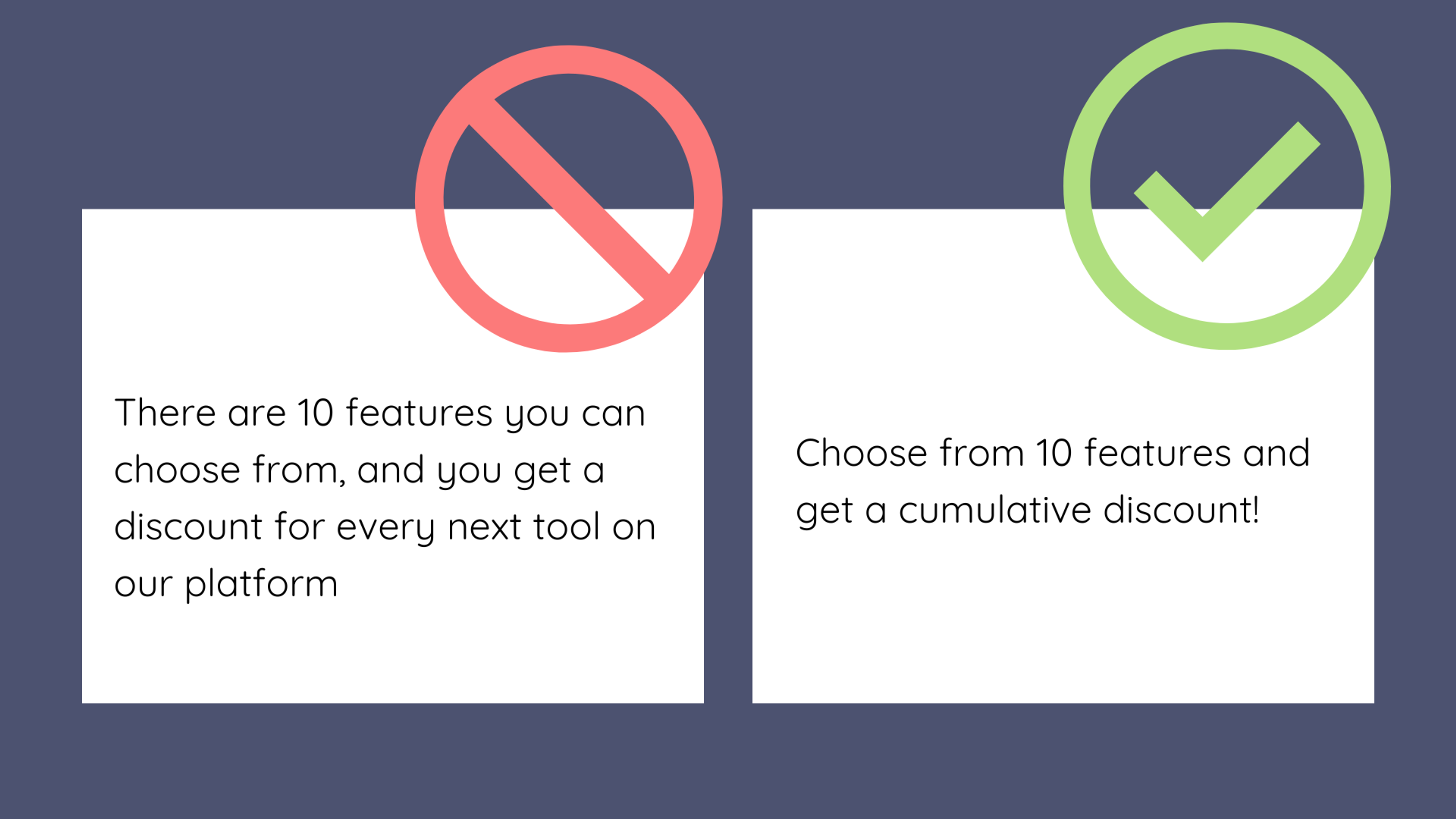With technology evolving so quickly, new roles are emerging across the tech world — and one of the most exciting is user experience (UX) writing.
More and more companies are recognizing the value of having a UX writer on their team. These are the people behind the words users see as they navigate websites, apps, and digital products.
UX writers play a big part in shaping how users interact with a product, from button labels to error messages. Their work often makes the difference between a frustrating experience and one that feels seamless and intuitive.
So, what exactly is UX writing?
This guide breaks it down. We’ll walk through what UX writing really means, what UX writers do day-to-day, and why having one on your team isn’t just helpful but essential.
Introduction to UX Writing
What Is UX Writing?
User experience writing is all about crafting clear, helpful text that guides people as they interact with your product or service. It covers everything from button labels and notifications to error messages, tooltips, and conversational prompts. The tone needs to strike the right balance — friendly, approachable, but still professional.
But good writing alone isn’t enough. UX writing goes hand in hand with visual design, accessibility, usability, and customer feedback. It’s about easing the user’s journey and helping them move through a website or app with confidence, even if they’ve never used it before.
Copywriters vs UX Writers

The words you use should make things feel straightforward, not confusing. Great UX copy gives people just enough information to keep moving forward — no guesswork, no second-guessing.
And while the main goal is to improve the user experience, having a background in SEO can also be a big plus. It helps your content surface more effectively online and brings in traffic organically, making the experience smooth from the first search result all the way to the final click.
Brief History of UX Writing
UX writing — short for user experience writing — has its roots in the early days of the web. As websites evolved and digital products became more advanced, it became clear that users needed more than just good design. They needed clear, helpful words to guide them through it all.
By the early 2000s, the term “UX writing” had taken shape. By the 2010s, it had grown into a recognized discipline within the design world. What started as a behind-the-scenes role quietly shaping user interfaces is now seen as essential to creating great digital experiences.
Today, UX writing is a key part of user experience design. More and more companies are realizing that the words in a product (from buttons to error messages) play a huge role in how users feel and how easily they can get things done. Clear, concise writing doesn’t just support the design; it is the experience.
Importance of UX Writing in User Experience
UX writing helps people move through digital products easily. It helps them understand what they're doing and complete tasks without confusion.
When done well, UX writing boosts user satisfaction and increases engagement. It plays a big role in product success.
Whether it's helpful instructions, friendly error messages, or quick microcopy, the right words at the right time make a huge difference.
John Saito, UX Writing Lead at Dropbox, notes: "Good microcopy doesn't just inform — it builds trust with every interaction."
UX writers focus on making moments clear, concise, and helpful. This reduces friction and makes experiences feel smooth.
Advice for UX Writers

UX Writer vs UX Designer
Think about building a crypto wallet app. The UX designer acts like an architect. They plan the structure and map out user flows. They make sure everything feels intuitive.
The UX writer becomes the product's voice. They write button text, explain errors, and guide users through onboarding. While designers shape the journey visually, writers guide it with language.
Both roles are essential. A designer might create a beautiful sign-up process. But without a clear copy, users can still feel confused. Even the best instructions won't help if the interface is hard to navigate.
The magic happens when designers and writers work together. This balance between visuals and words creates seamless, trustworthy experiences.
Essential UX Writing Skills
Good messaging improves usability, increases conversions, enhances brand voice, and engages users. With a good UX writer on your team, you are guaranteed better customer experiences:
- Improved usability – Clear instructions let people know what they can expect next so they don’t waste precious time figuring out how things work.
- Increased conversions – When detailed information about your products or services is presented clearly, the likelihood of potential leads turning into buyers shoots up dramatically by guiding them through their journeys smoothly without friction.
- Enhanced brand voice – Your brand will have a consistent tone across different platforms and interactions if one person works on delivering copies through each touchpoint. This consistency ultimately helps in building trust with customers.
- Increased user engagement – Keeping an eye on what users need always helps you stay relevant to their preferences, making them want to return for more. A UX writer’s job entails creating content that resonates with your target audience, so listen closely!
- SEO optimization – A good UX writer will also be aware of SEO best practices and be able to write copy that ranks well online, allowing you to reach more potential customers organically through search engine results pages (SERPs).
Including a UX writer in the UX design process can be incredibly beneficial for any company looking to optimize the user experience and improve overall customer satisfaction.
They can help create user-focused copy for digital products, existing content, and services, simultaneously meeting business goals and customer needs!
In the Nuant project, we focused on crafting clear, user-friendly UX writing for their fintech platform. This included creating readable copy for notifications, instructions, error messages and prompts that balanced friendliness with professionalism.
Additionally, we considered visual design, accessibility, and usability to enhance the user journey. Customizable widgets and comprehensive design systems for light and dark modes ensured a consistent, visually appealing, and accessible user experience, supporting the overall goal of seamless user interaction.
At Clay, we elevate UX design in the fast-paced crypto industry by combining functionality with impactful design. Our work ensures that even the most complex financial interfaces are easy to navigate, creating smooth, efficient user experiences that users can trust and enjoy.
Nuant Portfolio Screen by Clay

How Much Is a UX Writer's Salary?
UX writer salary can vary significantly depending on several factors, including geographical location, industry, level of experience, and the company's size.
In the United States, the starting salary for UX writers can be around $70,000 per annum, with experienced professionals earning upwards of $140,000 or more. In tech hubs like San Francisco and New York, salaries can be higher due to the cost of living and the concentration of tech companies.
Additionally, UX writers working in specialized fields or with a strong portfolio of successful projects might command higher salaries. It's also worth noting that full-time positions often come with benefits that can significantly enhance the total compensation package, such as health insurance, retirement plans, and stock options.
The Role of a UX Writer
A UX writer is a professional responsible for creating the written content that appears in digital products, such as websites, apps, and software. Their primary goal is to help users navigate and understand digital products by providing clear and concise writing that guides them through interfaces.
Key Responsibilities of a UX Writer
The key responsibilities of a UX writer include:
- Writing microcopy, such as button labels, error messages, and other forms of interactive text
- Creating and maintaining style guides and content models
- Collaborating with UX designers, product managers, and developers to ensure consistency and clarity in digital products
- Conducting user research and usability testing to inform writing decisions
- Developing and refining content strategy to meet business goals and user needs
Education and Certifications for UX Writers
While there is no specific degree or certification required to become a UX writer, many employers prefer candidates with a background in writing, design, or a related field. Some popular certifications for UX writers include:
- UX Writing Certification
- Content Strategy Certification
Additionally, many UX writers have a degree in English, Communications, or a related field and may have experience in technical writing, copywriting, or content strategy.
Career progression paths:
- Junior UX Writer → UX Writer → Senior UX Writer → Lead Content Designer → Director of Content Strategy
Types of UX Writing Projects and UX Writing Processes
Interface Copywriting
Interface copywriting is a form of UX writing that creates content for product interfaces. It focuses on constructing messages and instructions so users understand what to do when interacting with a product or service. This type of writing is essential for an intuitive user experience.
Interface Copywriting Example

To successfully write interface copy, a writer must understand what information users need to finish tasks, what motivates them to take specific actions, and what language best communicates how they should do something. They must also craft content with a clear purpose while being consistent with the brand.
Microcopy/Error Messages
Microcopy includes helpful information within interfaces. This covers button labels, form field hints, and user onboarding flows.
Error messages help users understand what went wrong. They provide helpful information without being harsh. Good error messages let users quickly identify and fix issues.
Error Message Example

Voice & Tone Development
Developing a brand's voice and tone is vital for UX writing success. Voice refers to the impression users get from the company's copy. Tone communicates that voice.
Both elements must speak directly to user needs while maintaining brand identity.
Writers create compelling voice and tone by understanding:
- User motivations and needs
- What information helps users succeed
- What language effectively speaks to their needs
This information comes through research like interviews, surveys, and customer feedback.
Content Strategy and Information Architecture
Written content sits at the heart of UX writing. Creating content that meets user needs is a key part of the work.
Information architecture organizes content within digital products. Users can quickly find what they need. UX writers play a crucial role by creating clear labels that accurately represent content.
Labels must be concise enough not to overwhelm customers with too much information at once.
Where UX Writing Stands

Best SEO practices should also be considered when thinking about IA structures. This could mean using words or phrases that users might search for when looking for similar information, so you show up higher on SERPs.
UX Writing Guidelines
Here are some key principles to keep in mind:
- Clarity Over Cleverness – Avoid jargon and overly complex language. Users should instantly understand what they need to do.
- Brevity with Purpose – Keep it short, but don’t sacrifice clarity. Every word should earn its place.
- Empathy is Everything – Write like a human talking to another human. Anticipate user concerns and offer reassurance.
- Consistency Builds Trust – Use the same terms across the product to reduce confusion and create a smooth experience.
- Guide, Don’t Dictate – Instead of commanding, gently lead the user where they need to go. Think "Let’s get started" rather than "Start now."
How to Become a UX Writer?
Technical Skills for Writing in Code
Technical writing skills are crucial in UX writing if you want to succeed. One essential skill here is writing code and modifying HTML, CSS, and JavaScript – languages used to create better content.
HTML (Hypertext Markup Language) is a coding language that structures content on websites and applications. UX writers will find this helpful skill to ensure their content looks great on different browsers and devices, leading to better user experiences.
By knowing how to use HTML tags, writers can also give their writing semantic meaning so search engine crawlers can easily understand what’s in the text – improving SEO performance.
Source: Yannick Pulver on Unsplash

CSS (Cascading Style Sheets) allows developers to style webpages. This helps create consistent branding across digital products or localizing text for different countries or cultures, ultimately resulting in customers worldwide having an enjoyable reading experience with your brand.
Not only does CSS aid in making your copy look good, but it also lets you preview what it will look like on different platforms or devices of various sizes before it goes live.
Finally, a common coding language, JavaScript, is used to program user interactions. You need to know how this language works to make it easier for people to navigate through a product without getting stuck or frustrated by too many options at once, such as animations, sliders, and more.
With this knowledge of user interaction using some aspects of your product, you can better understand what users do when they use your website so that you can make crafting effective content design strategies easier.
Understanding User Behavior and Motivation
Understanding their behavior and motivation is key when crafting UX writing content strategies that make sense to the user while achieving your business goals. Customers should see CTAs driven by their needs or wants.
This will help direct them toward what they’re looking for in a way that feels natural and makes it easier to complete tasks without confusion or frustration. If customers are not motivated by the writing or message being communicated in your content strategy, it won’t matter how well-written it is – it simply won't work.
Understanding what motivates users also helps writers effectively target content for specific audiences. By doing this, customers will be exposed to features and services they truly need instead of random things they don't care about, making your company seem unorganized.
Not only does understandable target marketing help expose the right group of customers, but these insights also provide information on what language might be appropriate for specific groups and topics they might interest most.
UX writers should also consider the different types of user personas when crafting content specifically for them because each person has different needs – even if they want the same thing from you or your company. Different personas require different language and subjects to get their attention properly, so keep this in mind when writing something up.
Finally, considering how different pieces of information can be grouped logically within menus or submenus ensures all necessary items are accessible and not overwhelm the user with too many choices at once.
Familiarity with Design Principles
Knowing basic design knowledge such as typography, spacing, color, and contrast makes creating a content strategy appealing to the customer’s eye and easy to navigate.
Typography alone tells text personality – making all the difference in creating a pleasant user experience. The typeface conveys how professional or casual your product is, so choose one that fits your goal. It also needs to be easy on the reader's eyes, though.
Photo by Dan Counsell on Unsplash

Using white space effectively helps keep content organized while providing clarity by not overwhelming customers with too much information at once.
Using colors strategically guides users in the right direction by making CTAs stand out from everything else they see. Colors can also evoke certain emotions, leading customers to take action that benefits them and what's being advertised or sold.
That’s why you need a UX writer. They can make things look good and sound even better. When crafting copy, writers must understand that everything plays a role in the final piece of writing.
Collaboration Is Key
No one works alone anymore. Writers must work with designers, developers, product managers, and marketers. Sometimes, writers need to know why they’re writing something. Other times, they just need to tell others what words they think.
To ensure that the content makes sense at every stage of the user journey, writers must be able to anticipate what people are going to do next. Understanding how the different pieces fit together helps them avoid any confusion on the part of the customer as well as frustration; frustration leads some customers astray and others straight out the door.
It’s All About Research
Knowing your audience is half the battle when you’re trying to keep them engaged with your website or app. Writers should know which words resonate most with their users and what subjects will also perk their interest.
Read More
Conclusion
People are starting to realize that writing is important again. As we create more engaging experiences online, companies are turning toward UX writers for their skills in giving customers exactly what they want without them even realizing it. There isn’t anything like guiding someone through a seamless user journey with your words!


About Clay
Clay is a UI/UX design & branding agency in San Francisco. We team up with startups and leading brands to create transformative digital experience. Clients: Facebook, Slack, Google, Amazon, Credit Karma, Zenefits, etc.
Learn more

About Clay
Clay is a UI/UX design & branding agency in San Francisco. We team up with startups and leading brands to create transformative digital experience. Clients: Facebook, Slack, Google, Amazon, Credit Karma, Zenefits, etc.
Learn more


